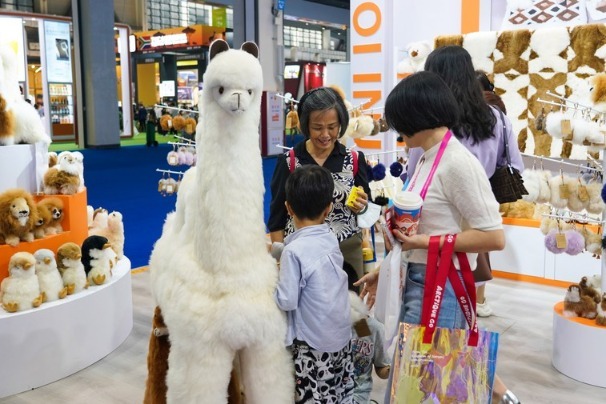Bonded zones cutting costs for nation's enterprises


When entering the warehouses of Jinyi Comprehensive Bonded Zone in eastern China's Zhejiang province, the first thing that catches visitors' eyes is bagged cotton yarns. It is a crucial part of imported raw materials that are ready to be supplied to more than 40 enterprises.
The other things include electrolytic copper, which can be delivered within two or three hours to enterprises in Jinhua, Zhejiang province. The comprehensive bonded area helps enterprises achieve zero inventory and greatly reduces storage costs.
By July 1, the total import and export volume of Jinyi Comprehensive Bonded Zone exceeded $2.6 billion, up a hefty 386.52 percent year-on-year. The import and export volume has doubled for three consecutive years. At present, it includes 132 enterprises with trading partners in more than 100 countries and regions.
As an important platform of Jinyi Sector of the China (Zhejiang) Pilot Free Trade Zone, the Jinyi Comprehensive Bonded Zone focuses on developing cross-border e-commerce, bulk commodities, cold chain logistics and bonded processing. Cross-border e-commerce is its main priority.
By promoting the pilot reform of improving the efficiency of Customs clearance and declarations, the Jinyi Comprehensive Bonded Zone has so far completed the Customs clearance process by an average of 0.16 seconds per order and 30 seconds per vehicle, making its Customs clearance efficiency one of the highest in Zhejiang.
As of May 31, 6.48 million cross-border postal parcels had left the zone this year, which was 5.6 times that of the same period of last year. By the end of June, the value of imports and exports of bulk commodities in the Jinyi Comprehensive Bonded Zone exceeded $1.4 billion, and will hopefully surpass $3 billion this year, greatly reducing the storage cost of enterprises.
The development of Jinyi Comprehensive Bonded Zone is a miniature of the Jinyi Sector of the China (Zhejiang) Pilot Free Trade Zone, which covers an area of 35.99 square kilometers.
Many free trade zones in China are vitally important to promote the country's trade development. Statistics from the General Administration of Customs showed China's total imports and exports expanded 27.1 percent year-on-year to 18.07 trillion yuan ($2.8 trillion) in the first half of 2021, driven by robust demand due to the rapid recovery in major economies and the fast growth of cross-border e-commerce.
Lu Yan from the Chinese Academy of International Trade and Economic Cooperation said the practice of institutional innovation in free trade zones has been deepening, which greatly improved the business environment and stimulated market vitality.
Yang Changyong, a researcher of the Academy of Macroeconomic Research of the National Development and Reform Commission, said pilot free trade zones should focus on high-quality development and give full play to the demonstration and leading role of reform and opening-up in the new era.
He said free trade zones need to try first to accelerate the transformation of government functions to create a world-class business environment. Greater efforts should be made to attract high-quality production factors at home and abroad, and better promote industrial transformation and upgrading in other regions. The implementation of the innovation-driven development strategy will be promoted in view of alleviating restrictions on science and technology.
China set up its first pilot FTZ in Shanghai in 2013. After five rounds of expansion, China now has 21 pilot FTZs, which represent the new high ground for the country's reform and opening-up.
The Ministry of Commerce unveiled the plan for commerce development in the 14th Five-Year Plan period (2021-25) in July, pledging more efforts in the pilot FTZs to explore opening-up with autonomy and at a higher level to stimulate endogenous motivation for high-quality development.
Wang Hao contributed to this story.




